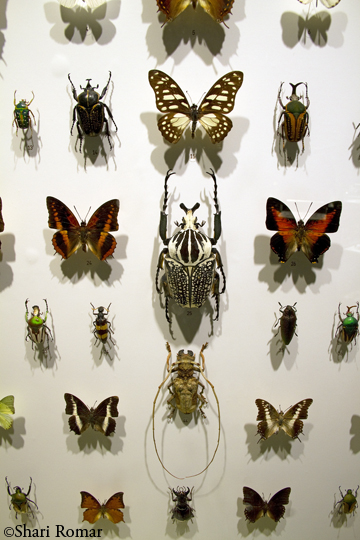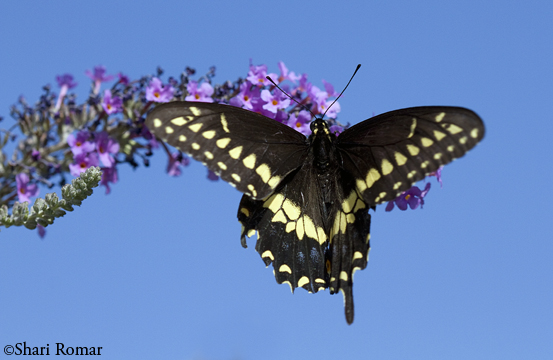War Games
I have seen the enemy and it has compound eyes and six legs. Right now, a war is on against a few members of the class Insecta. This crafty enemy is armed with efficient mouth parts and, shall we say, energetic reproductive systems. I am outgunned.
But let me back up.
Insects are fascinating creatures with astounding variations on the general theme that makes an insect, well, an insect: those compound eyes and six jointed legs, along with an exoskeleton, three body parts (head, thorax and abdomen), and a pair of antennae. Within those limitations are all shapes, sizes, colors, antennae and wing forms, mouth parts , life cycle appearances - the list goes on.
With over 100,000 different insects and other arthopods (this includes critters like crabs), we need to live with their prescence and appreciate their role in the ecosystem, and yes, admire their beauty.
I like to think that I'm one of those who reach that elevated state of mind, and thus avoid using chemical controls in the garden. But claiming such benevolence at this moment might be hypocrisy.
Meet the key enemies of the state (er, garden):
Mexican Bean Beetle -- related to the beneficial Lady Beetle (or Lady Bug), the chewing mouth parts of the larval and adult form of this insect is gnawing at my bean's leaves.
Colorado Potato Beetle -- apparently "Go East, young bug" is the advice this chap heeded. Both adults and larvae are chewing up my potato plant's foliage.
Striped Cucumber Beetle -- I now know who to implicate on the death of my cucumber seedlings last year. Thankfully this year's plants survived their young, tender days (when the adult beetle likes to enjoy them as a snack), but I must continue vigilance since they'll still eat leaves, flowers and fruit. Not enough damage for you? These guys also can transmit bacterium and a virus to the plants.
Aphids - you want diversity? You have it with this teeny-tiny insects that literally suck the juice from plants (they particularly like my green beans). There are over 1,300 aphid species just in North America. Though probably the most plain in appearance from the other insects I listed, aphids are possibly one of the most fascinating in terms of reproduction and life cycle. Depending on species and time of year, females may give live birth (rather than laying eggs), some have wings while others remain wingless, and females don't always need males to create baby aphids.
So that's a look at the most formidable foes. What are the options for my allied forces?
Know thy enemy. In other words, know the different forms the insect can take depending on its stage in the life cycle. And be careful not to mistake the enemy for one of your allies (as I mistook Lady Beetle eggs for those of Colorado Potato Beetle, I think...).
Hand-to-hand combat. Spraying insecticides opens up a variety of issues so I just pick the bugs off. Perhaps not everyone's cup of tea and yes, I still get plant damage, but I also get some good photos and the chance to further appreciate the natural world, even if it is chewing my veg.
Join forces. One reason not to spray insecticides is that it disrupts the food chain and can kill beneficial insects, of which there are many. Lady Beetle, Praying Mantis, Lacewing, even bird, amphibian and reptile -- all are your combat partners and each have their handy ways of getting the best of the enemy.
Sign a peace treaty. If all else fails, I remember that the insect that is chewing my plant could grow up to be a beauty.




















